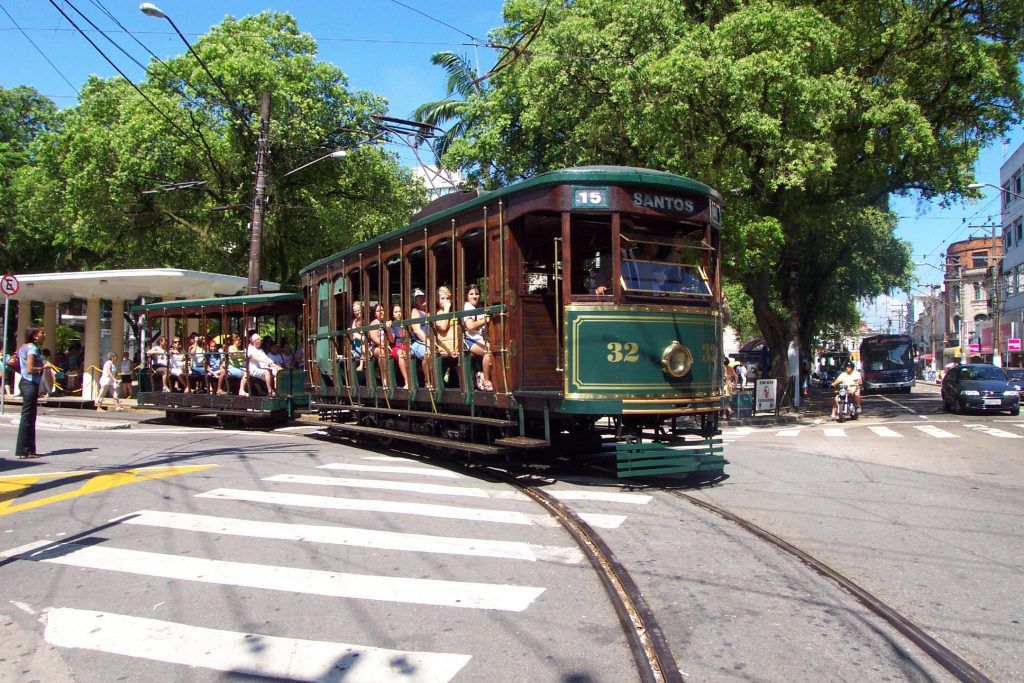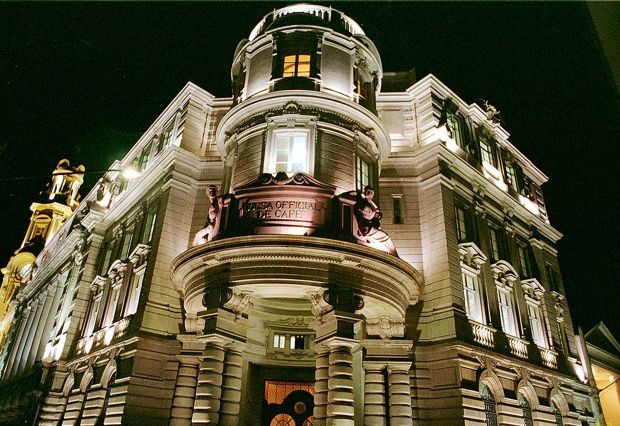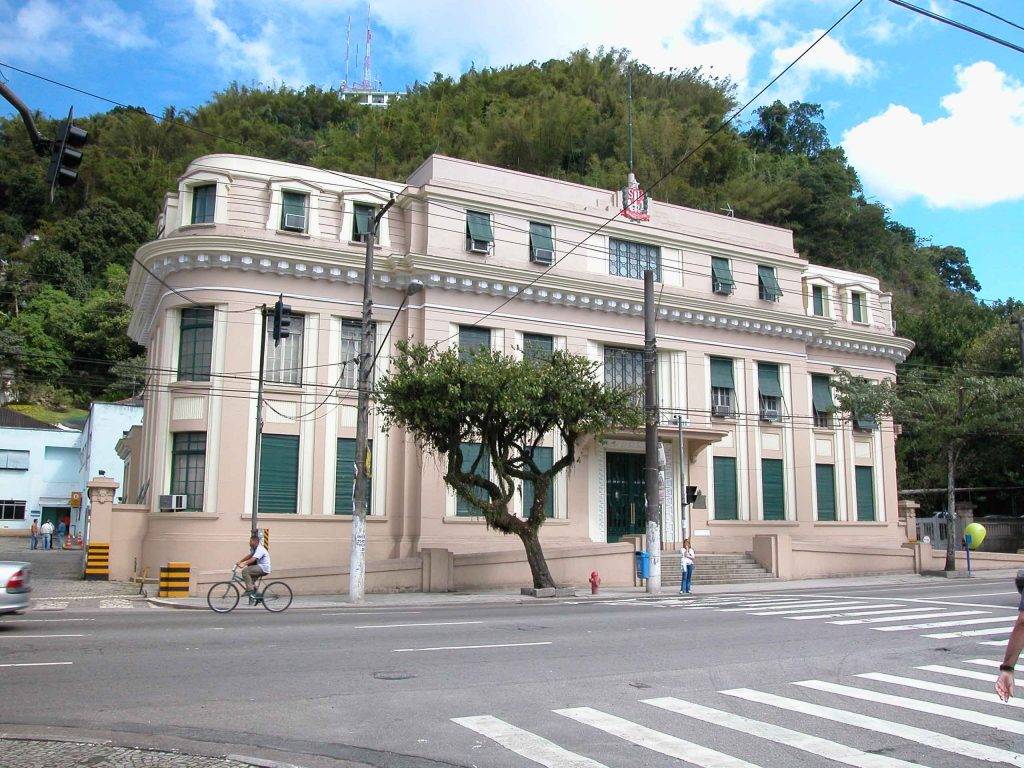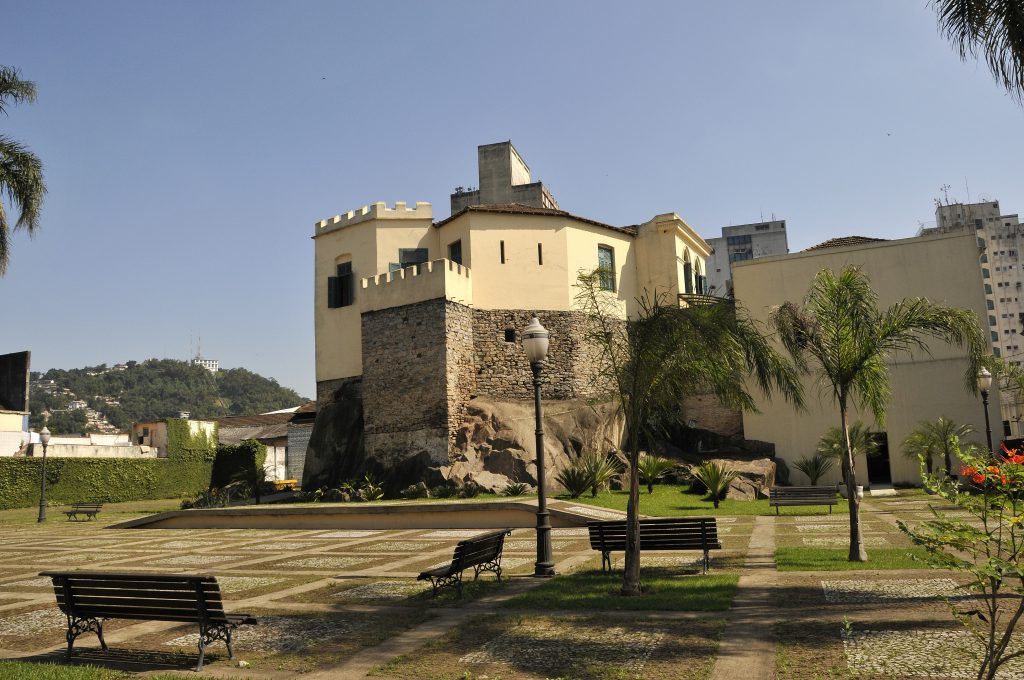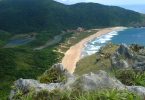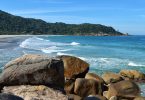Santos, the longest beach garden in the world and largest harbor in Latin America. Having a coffee história, it is one hour from São Paulo capital.
You can’t mention Brazil without thinking of the beach and the beach in Santos is bordered by a garden which is 5.3 km (3.3 miles) long making it the largest beach garden in the world.
People from São Paulo often go to Santos to lie down under the sun and enjoy the beach. Santos beaches are not the most beautiful in the Paulista Coast, but they are still popular and a good place for a walk.
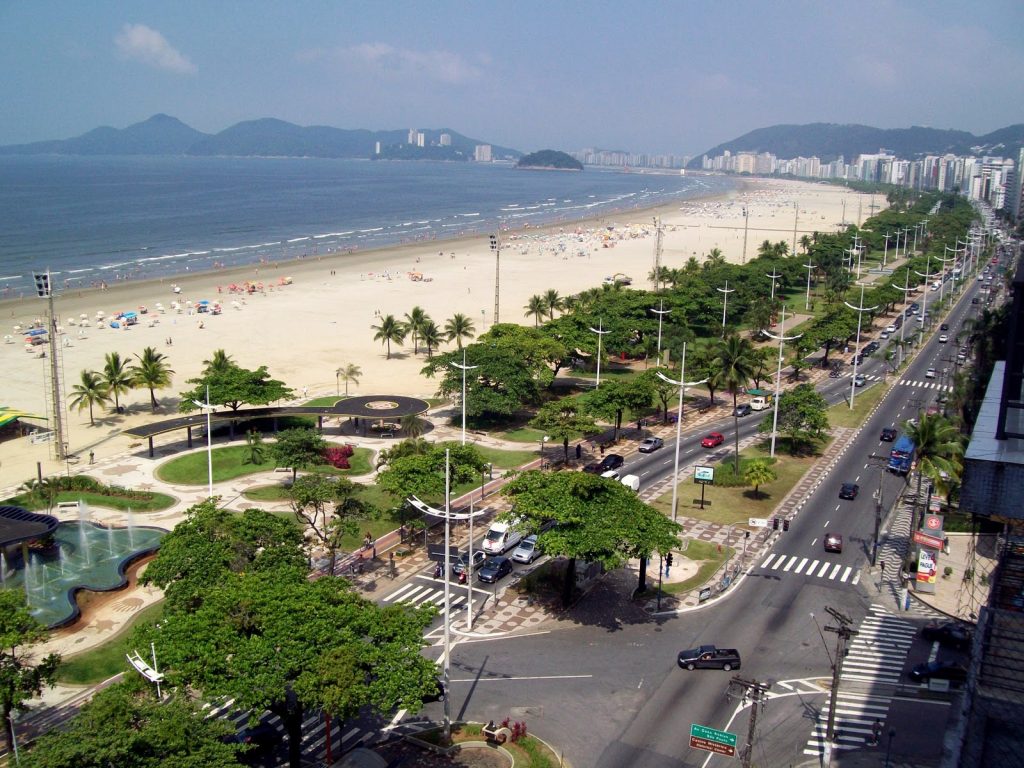
Walk on the XV de Novembro Street. Located in the center of Santos, the street used to be where the office s of Coffee Lords were located. The interesting colonial architecture and the many bars and Cafes around make it a pleasant walk in the ending afternoon.
Trams in Santos make you feel back to 1861
You can still ride them and take a peek in all main attractions of the center. Departing from Valongo Station, five trams take in the main streets and buildings of the Historical Center, giving visitors a trip to the past along the five-kilometer route. Stops to get on and off can be found at Outeiro de Santa Catarina, the hill that marks the foundation of the Vila de Santos settlement, and at Palácio Saturnino de Brito, Sabesp (São Paulo Water Company) headquarters (not on Sundays) – from this point it’s possible to get to the Monte Serrat Tourist Complex, which affords a 360º panoramic view of the city. In all, the line takes in 40 points of tourist and historical interest.
Where: Valongo Station – Largo Marquês de Monte Alegre, 2, Centro Histórico
When: Tue – Sun, 11am to 5pm (last ride)
Tickets: R$6,50
Disk Tour 0800-173887
Coffee Museum
Built in 1922 to house the world’s main Coffee and Commodities Exchange (Santos was the world’s major coffee trading center at the time), this building of around 6,000 m², is considered one of the most beautiful in the city. Monumental in construction, and boasting more than 200 doors and windows, it has been home since 1998 to the Coffee Museum, whose café is a meeting place for workers in the Historical Center and a must for tourists. The ceiling of the imposing Sala dos Pregões (Bidding Hall) is decorated with a stained glass window depicting A visão de Anhanguera (Anhanguera’s Vision) by Benedicto Calixto.
Three huge panels by the same artist adorn the back wall: the central panel, with 153 figures, represents the elevation of Santos to the status of Vila (village) as a dream, with reality in clearly depicted, while the dream of future progress is more nebulous . The smaller side panels depict the artist’s interpretation of the Santos landscape between 1822 and 1922.
Where: Rua XV de Novembro, 95, Centro Histórico
When: Open Tuesday to Saturday, 9am to 5pm (Mon also during the holiday season), and Sunday, 10am to 5pm
Tickets: R$6; children up to 5, free; R$ 2.50 for students, public teachers and seniors over 60
Palácio Saturnino de Brito
Built in 1936, this building, the headquarters of the São Paulo Water Company (Sabesp) in the Santos Bay area, boasts a marble staircase framed by an imposing multicolored stained glass window depicting the banderiantes (pioneers) going up the Serra do Mar Range.
A stained glass cupola, bearing the São Paulo coat of arms in the center, illuminates the entrance hall. Visitors can see pictures of the drainage canals at the time of their inauguration (the beginning of the 20th century), as well as items of interest, furniture, equipment, and original engineering projects devised by Saturnino de Brito reed – the Santos engineer responsible for the pioneering drainage and sewage systems that freed the city from epidemics and guaranteed its development.
Where: Avenida São Francisco ,128, Centro Histórico
When: Tue – Sun, 11am to 5pm
Tickets: free
Outeiro de Santa Catarina
This hill marks the foundation of the Vila de Santos settlement – knowing the exact place of their foundation is a privilege few cities enjoy. In the 16th century, Luis Góis, and his wife built the Saint Catherine of Alexandria Chapel at the foot of the small hill, and next to this the first Santa Casa hospital in Brazil was built in 1543. For years, the hill supplied the stones used to pave the city’s streets and expand the port. Between 1880 and 1884, Italian doctor João Éboli had a castle-like house built on what remained of the hill. Until 2012, it was the headquarters of the Fundação Arquivo e Memória de Santos (Santos Archives and Memorial Foundation).
Where: Rua Visconde do Rio Branco, 48, Centro Histórico
When: Mon – Fri, 9am to 5pm; Sat, Sun and holidays, 11am to 5pm
Tickets: free
Getting to Santos
There isn’t an airport in the city, so the way to arrive in the city is by car or bus.
From Jabaquara Bus Station you can take a bus directly to Santos. Estimated travel time: 1 hour 20 minutes. Buses leave every 15 minutes 24 hours a day. Bus companies are Viação Cometa, Expresso Luxo, or Ultra.
If your origin is from GRU – International Airport in São Paulo in the website is write: GUARULHOS – AEROP. CUMBICA. Just Viação Cometa works with this destination from GRU Airport.
You can check timetables, prices and book online. The bus stops at the Terminal Rodoviário De Santos, some to Gonzaga (beach) and some to Ponta da Praia (on the channel, handy for taking a boat on to Guarujá).
You can get off at many other stops on the bus way on, but only if you do not have luggage in the luggage trunk of the bus (it is possible to request your luggage is removed from the luggage trunk and placed inside the bus at the Santos Terminal in order to get off at a later minor stop with luggage). Terminal Rodoviário De Santos is directly in the center, however, the beach is far away (app. 5km).
From the Guarulhos International Airport GRU the bus company is Viação Cometa at terminal 1 and arrived into Santos in 2:20 hours. To buy the tickets online the airport name is written like “Guarulhos – Airport Cumbica” in the website and cost R$32,74 in 2016.
By car from São Paulo, take either rodovia Padre Anchieta (“Anchieta”, SP-160) or rodovia dos Imigrantes (“Imigrantes”, SP-160). Both roads have a “planalto” (plateau) section and a “serra” (mountain) section that goes down the Serra do Mar to the sea level.
Anchieta being older, its mountain section is winding and narrow, while Imigrantes’ is wider and mostly straight due to extensive use of tunnels and bridges. Anchieta and Imigrantes are linked through a high and a low interlink.
Trucks and buses are prohibited in the mountain section of Imigrantes, and are forced to take the interlink and use Anchieta. Both roads feature a toll of about R$ 25,20 in 2016 that you pay when leave São Paulo. Also note that traffic is frequently deviated from one road to the other for traffic regulation purposes or road works, so you should follow the dynamic signs.
Information from Turismo Santos
For more information contact us!


